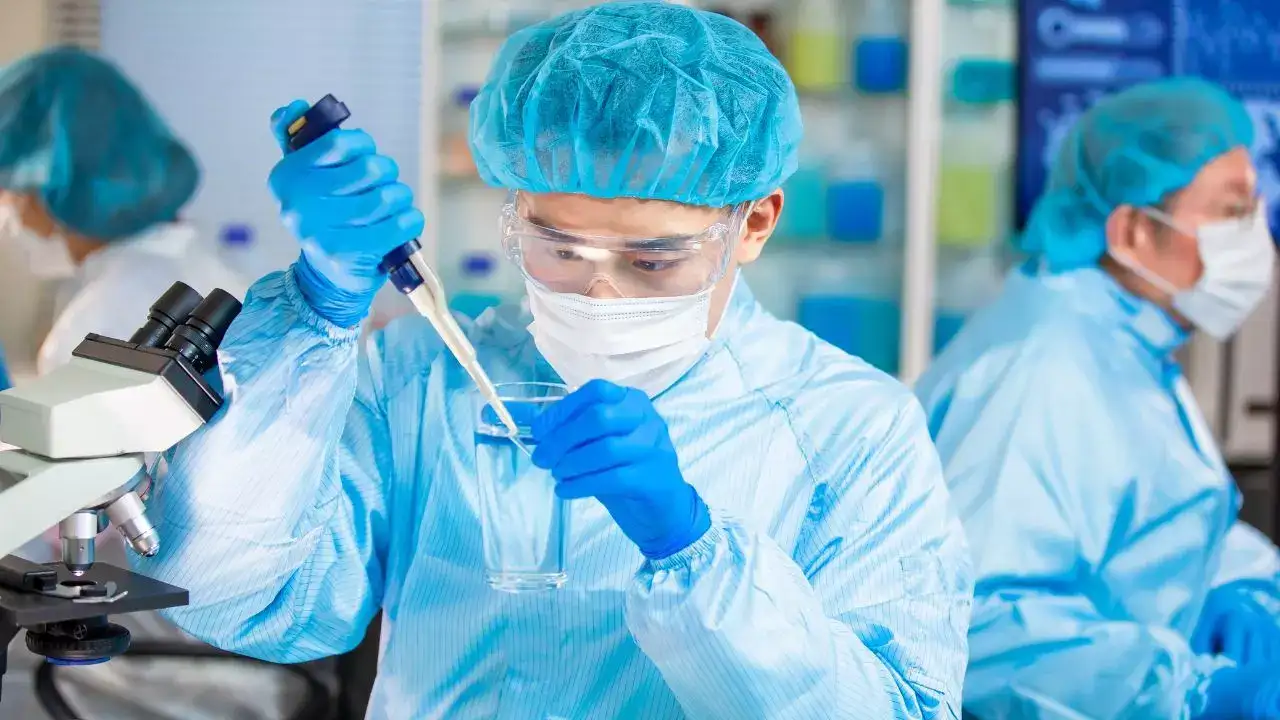New study shows how lunar soil can be turned into water, oxygen and fuel | – The Times of India

Breakthrough solar-powered device converts Moon dust into essential life support. Read this article to know what the study found, how the tech works, and why lunar soil could change deep space travel forever. A groundbreaking study published in Joule (July 16, 2025) has revealed that lunar soil isn’t just dead dust, it holds the key to producing drinking water, breathable oxygen, and even rocket fuel on the Moon. Conducted by researchers at the Chinese University of Hong Kong using real samples from China’s Chang’e‑5 mission, the study demonstrates a one-step photothermal reactor that uses sunlight alone to extract water and drive catalytic reactions, no extra chemicals, no Earth inputs. The reactor heated lunar regolith (Moon soil) above 1,200 K, releasing trapped hydrogen and oxygen as water. This same chamber then transformed that water and carbon dioxide (like astronaut exhalation) into oxygen, hydrogen, and carbon monoxide, core ingredients for life support and rocket propulsion.
What the study reveals about water in lunar soil

The research showed that heating lunar soil with concentrated sunlight could extract 50–76 mg of water per gram, adding up to over 50 kg per tonne. That’s enough to support 50 astronauts per day, from just one ton of regolith. Using photocatalysis, the same water and available CO₂ were then converted into oxygen for breathing and gases like hydrogen and carbon monoxide, which can be refined into rocket fuel.
Why this lunar soil tech is a game-changer for moon missions
The device combines water extraction and oxygen/fuel generation in one integrated unit, making it drastically simpler and lighter than previous systems. Since ilmenite and other Moon minerals act as natural catalysts, there’s no need to send chemicals from Earth. This breakthrough supports in-situ resource utilisation (ISRU), a strategy that lets astronauts “live off the land” on other celestial bodies by using lunar soil as the raw material.
How lunar soil could support permanent moon bases
- Provides water and breathable air for long-term lunar habitats
- Enables on-site fuel production for return trips and Mars missions
- Slashes the cost and payload of human spaceflight
- Uses real Chang’e‑5 lunar soil, not lab simulations, to prove viability
If this tech is scaled up, lunar soil may become the Moon’s most valuable natural resource, making self-sufficient lunar living a real possibility.
What’s next for lunar soil research and applications
The study is a major proof-of-concept, but real-world challenges remain. Next steps include:
- Building field-grade reactors that work in Moon’s harsh radiation and vacuum
- Automating operations for crewless production
- Adapting the system for use on Martian soil, which shares similar mineral properties
Still, this is the closest we’ve come to sustainable deep space life support using nothing but solar power and soil.This study doesn’t just solve one problem, it could crack three of the biggest challenges in space exploration: water, breathable oxygen, and fuel. And the magic ingredient? Lunar soil, something we once thought of as useless grey dust. By extracting essential resources directly from Moon dust, scientists could drastically reduce the need to carry supplies from Earth, cutting down costs and launch weight. If this method works at scale, it could revolutionise the way we plan Moon missions, design self-sustaining lunar bases, and even prepare for human exploration of Mars. Suddenly, the Moon isn’t just a destination, it’s a launchpad. And lunar soil? It’s no longer just debris, it’s a game-changing asset in our journey beyond Earth.Also read| Your genes might be why you hate coriander- New study explains how DNA and smell preferences are connected
var _mfq = window._mfq || [];
_mfq.push([“setVariable”, “toi_titan”, window.location.href]);
!(function(f, b, e, v, n, t, s) {
function loadFBEvents(isFBCampaignActive) {
if (!isFBCampaignActive) {
return;
}
(function(f, b, e, v, n, t, s) {
if (f.fbq) return;
n = f.fbq = function() {
n.callMethod ? n.callMethod(…arguments) : n.queue.push(arguments);
};
if (!f._fbq) f._fbq = n;
n.push = n;
n.loaded = !0;
n.version = ‘2.0’;
n.queue = [];
t = b.createElement(e);
t.async = !0;
t.defer = !0;
t.src = v;
s = b.getElementsByTagName(e)[0];
s.parentNode.insertBefore(t, s);
})(f, b, e, ‘https://connect.facebook.net/en_US/fbevents.js’, n, t, s);
fbq(‘init’, ‘593671331875494’);
fbq(‘track’, ‘PageView’);
};
function loadGtagEvents(isGoogleCampaignActive) {
if (!isGoogleCampaignActive) {
return;
}
var id = document.getElementById(‘toi-plus-google-campaign’);
if (id) {
return;
}
(function(f, b, e, v, n, t, s) {
t = b.createElement(e);
t.async = !0;
t.defer = !0;
t.src = v;
t.id = ‘toi-plus-google-campaign’;
s = b.getElementsByTagName(e)[0];
s.parentNode.insertBefore(t, s);
})(f, b, e, ‘https://www.googletagmanager.com/gtag/js?id=AW-877820074’, n, t, s);
};
function loadSurvicateJs(allowedSurvicateSections = []){
const section = window.location.pathname.split(‘/’)[1]
const isHomePageAllowed = window.location.pathname === ‘/’ && allowedSurvicateSections.includes(‘homepage’)
const ifAllowedOnAllPages = allowedSurvicateSections && allowedSurvicateSections.includes(‘all’);
if(allowedSurvicateSections.includes(section) || isHomePageAllowed || ifAllowedOnAllPages){
(function(w) {
function setAttributes() {
var prime_user_status = window.isPrime ? ‘paid’ : ‘free’ ;
var geoLocation = window?.geoinfo?.CountryCode ? window?.geoinfo?.CountryCode : ‘IN’ ;
w._sva.setVisitorTraits({
toi_user_subscription_status : prime_user_status,
toi_user_geolocation : geoLocation
});
}
if (w._sva && w._sva.setVisitorTraits) {
setAttributes();
} else {
w.addEventListener(“SurvicateReady”, setAttributes);
}
var s = document.createElement(‘script’);
s.src=”https://survey.survicate.com/workspaces/0be6ae9845d14a7c8ff08a7a00bd9b21/web_surveys.js”;
s.async = true;
var e = document.getElementsByTagName(‘script’)[0];
e.parentNode.insertBefore(s, e);
})(window);
}
}
window.TimesApps = window.TimesApps || {};
var TimesApps = window.TimesApps;
TimesApps.toiPlusEvents = function(config) {
var isConfigAvailable = “toiplus_site_settings” in f && “isFBCampaignActive” in f.toiplus_site_settings && “isGoogleCampaignActive” in f.toiplus_site_settings;
var isPrimeUser = window.isPrime;
var isPrimeUserLayout = window.isPrimeUserLayout;
if (isConfigAvailable && !isPrimeUser) {
loadGtagEvents(f.toiplus_site_settings.isGoogleCampaignActive);
loadFBEvents(f.toiplus_site_settings.isFBCampaignActive);
loadSurvicateJs(f.toiplus_site_settings.allowedSurvicateSections);
} else {
var JarvisUrl=”https://jarvis.indiatimes.com/v1/feeds/toi_plus/site_settings/643526e21443833f0c454615?db_env=published”;
window.getFromClient(JarvisUrl, function(config){
if (config) {
const allowedSectionSuricate = (isPrimeUserLayout) ? config?.allowedSurvicatePrimeSections : config?.allowedSurvicateSections
loadGtagEvents(config?.isGoogleCampaignActive);
loadFBEvents(config?.isFBCampaignActive);
loadSurvicateJs(allowedSectionSuricate);
}
})
}
};
})(
window,
document,
‘script’,
);
[title_words_as_hashtags




